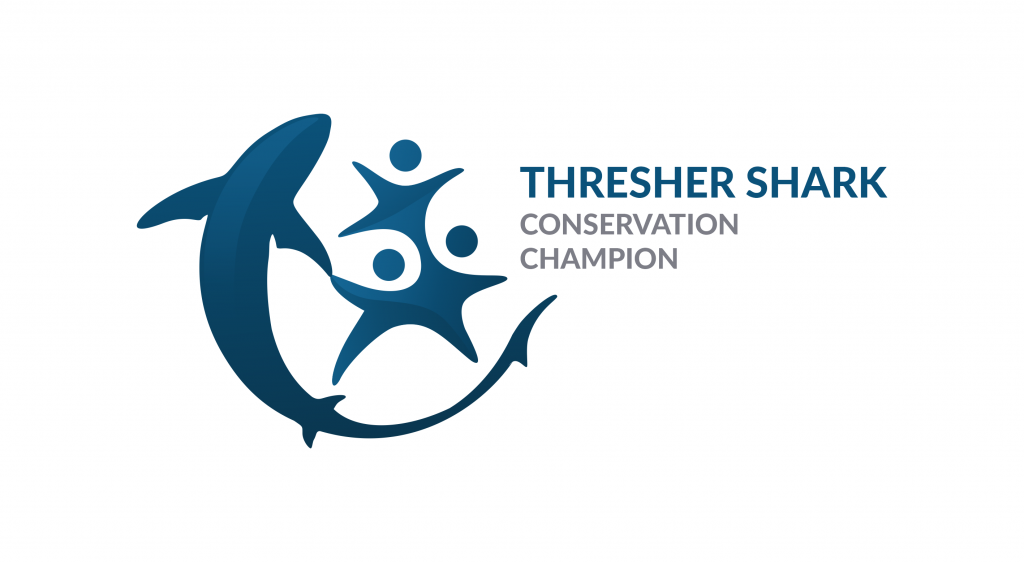
Over the past decades, research of Pelagic Thresher Shark (Alopias pelagicus) has largely been focused on the capture fisheries research to monitor catches and determining the population changes. In Indonesia, research specifically focused to understand the critical habitat of the species to prevent mortality has been incredibly overlooked. Moreover, ecological perspectives of the species as migratory, and inhibiting off-shore, deep-sea ecosystem undermining their effective conservation interventions.
In Alor, A. pelagicus has been observed to be present around the coral reefs area, and approximately 2 km from the shore. People in Alor are catching pregnant and juvenile A. pelagicus almost throughout the year as livelihoods and protein sources. By using the combination of satellite and acoustic tagging technology, Thresher Shark Indonesia engaging Alor shark fishers in the research effort for understanding the habitat and the presence of the species within the 400,000Ha Marine Protected Areas (MPAs), with the purpose to change the behavior by changing their perception and interaction with the animal.
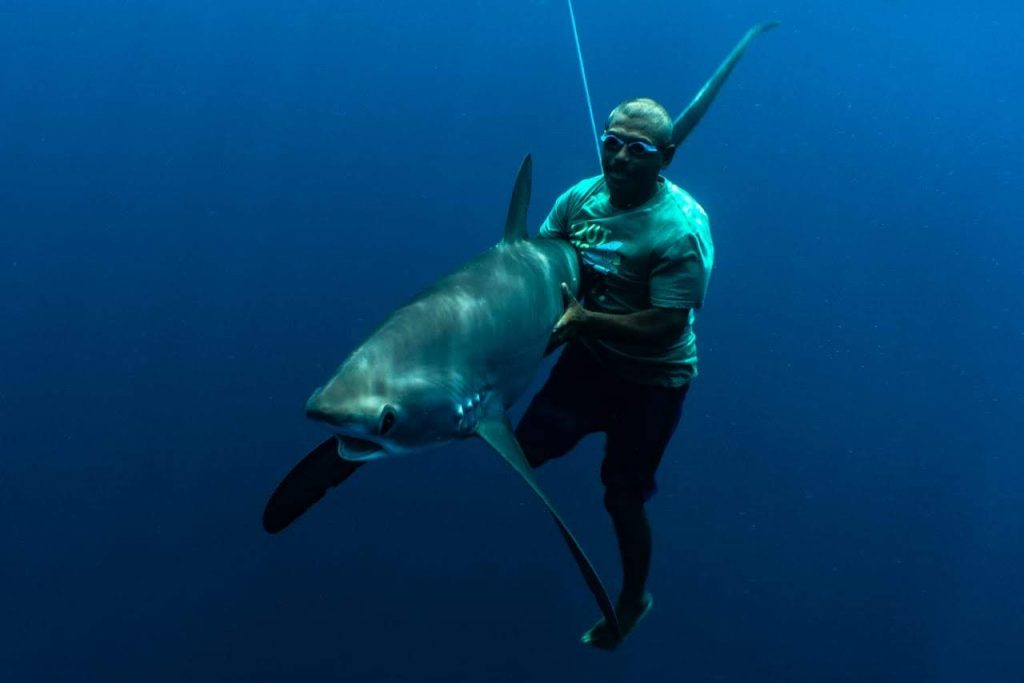
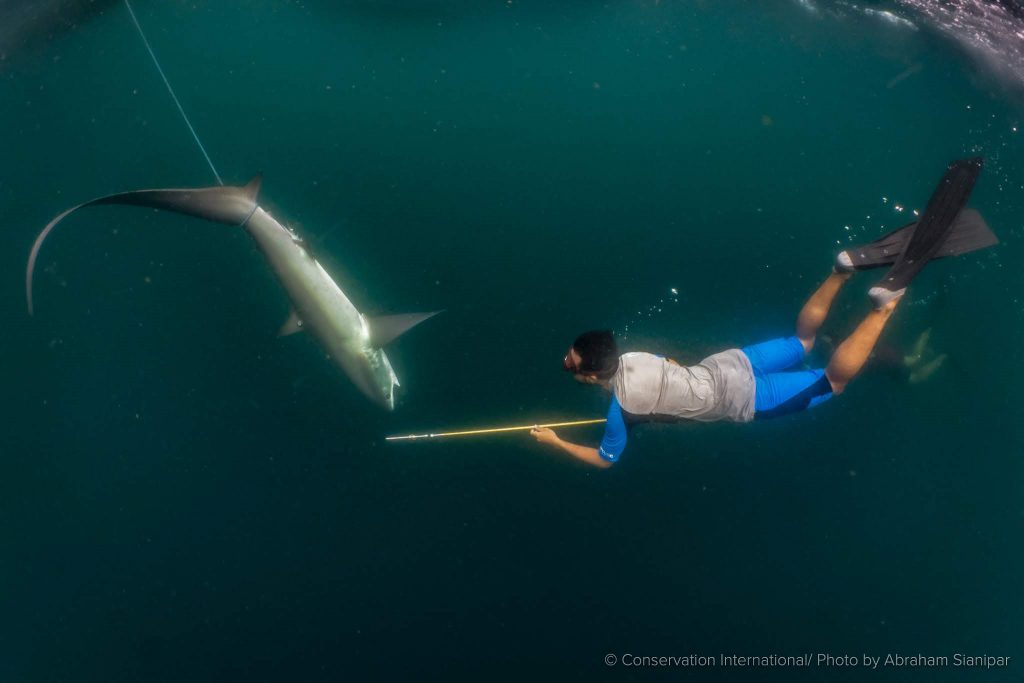
Project supporter: Conservation International, MAC3 Impact Philanthropies, Sunbridge Foundation
The goal of this Critical Habitat Investigation, particularly using the acoustic tagging studies, is to understand the habitat use of the species, such as where is the area that shows strong fidelity behavior, when they usually visit the area, and for how long? This will help us to provide spatial and temporal based recommendations for MPA management authority to develop local policies that will protect the local population.
On the other hand, satellite tagging information is communicated to the National Government, such as the Indonesian Ministry of Marine and Fisheries (MMAF) to fill the knowledge gaps of the species in the marine spatial planning document (RZWP3K), collaborating with Conservation International Indonesia for enhancing national management strategy of shark species in Indonesia.
Check on our result map here
The earlier project’s results have been communicated to the local stakeholders of Alor, and there is momentum to conserve the local thresher shark population that is being target of local communities. By the end of 2019, the local government proposing to create a local regulation to prohibit targeted shark fisheries, and to include pelagic thresher shark as a tourism asset in Alor.
In order to follow-up on this political initiative raised by local government, our project aims to assist the process of establishing this local policy. Since that this political initiative mainly raised on the top level, Alor’s shark fishers still reluctant to stop shark fishing – however, they would willingly stop shark hunting, for as long as the viable alternative livelihoods will be provided. Therefore, acknowledgment and agreement from the shark fishers on the future adoption of policies needed to be discussed at the village level, to make sure that the alternative livelihood options are chosen based on the fisher’s priority.
In order to accommodate the piloting process and implementing the alternative livelihoods, we are aiming to integrate the selected alternative livelihood solutions into the Village Funds, which will grant annual programs that are potentially more sustainable, and leaving less dependency from external project’s intervention.
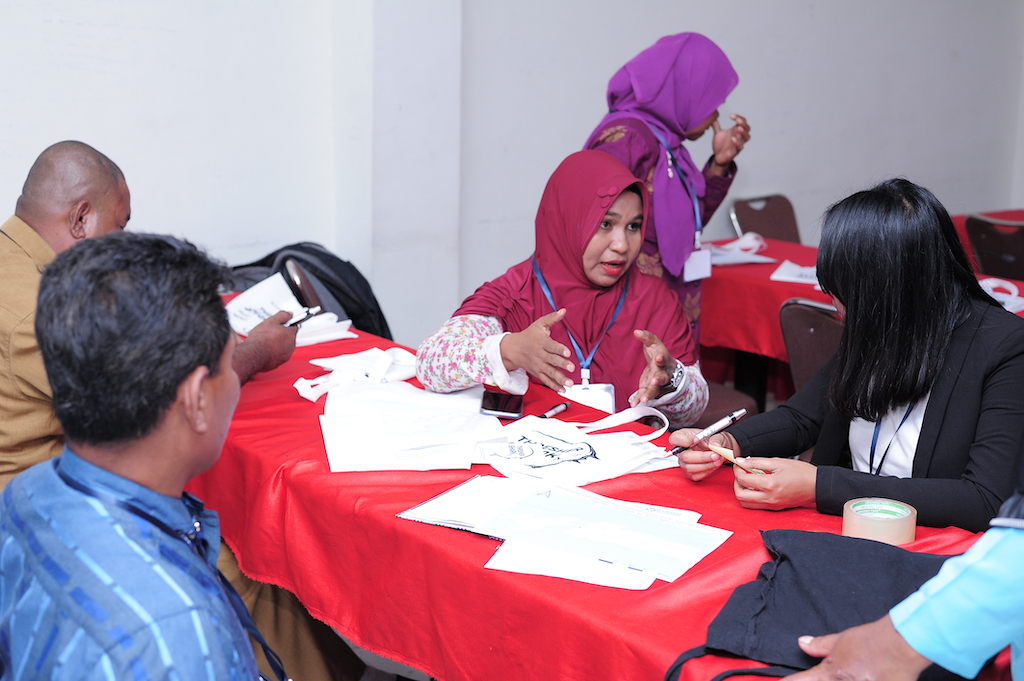
To achieve the goal of policy development in this project, we have several objectives including:
Approaches:
Developing Local Policy Drafts at District Level:
We will work closely with Alor’s District Governments to discuss the legal and political process in developing the district regulations. We will create a steering committee, comprised of stakeholders whose duties fall under the marine resources conservation, research, and community development. The process of development and legalization will go through 1) development of policy drafts, 2) approval after the public consultation with all relevant stakeholders, 3) validation by the District Government
Integration into the Village Funds
We will focus on working in two shark fishing villages. We will engage them in the beginning of the process about this project ideation, and implementation. The fishers will be involved in the meeting, and break down into smaller groups to determine the needed skills, equipment and other supports needed for the development of the alternative livelihood planning. The process of integrating the plan into the village funds will go through several process including: 1) Create fishers’ participatory groups, 2) develop desired vision and policy for the village development programs, 3) determine village action plans, 4) community agreement, and 5) enactment by the head of village.
Monitoring and Evaluation
Evaluation of policy satisfaction will be conducted at the end of the project by inviting Village leaders and shark fishers. Focus group discussion will gather fishers’ perceptions after the policy implementation and discuss the needs of improvement for the continuous policy implementation at the village level.
Project supporters: Shark Conservation Fund, East-West Center Innovation Fellows 2020, Found At Sea Collective
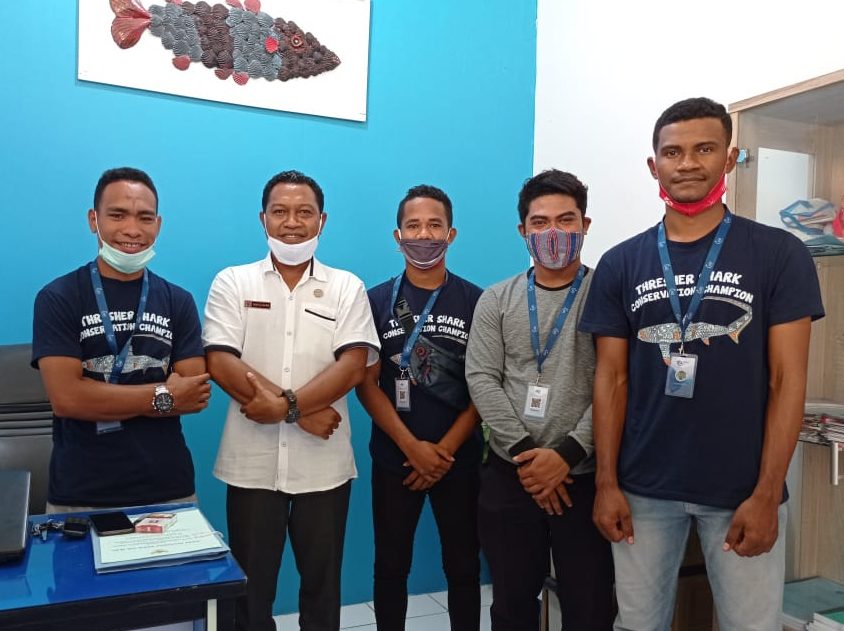
Thresher Shark Champion is one of the programs of Thresher Shark Indonesia in 2020. Since 2018, Thresher Shark Indonesia has been working with local stakeholders regarding the needs of conservation policies as well as addressing the alternative livelihoods of the local communities. Therefore, there is an urge for a program that increases awareness and continuous monitoring to make sure that the local communities understand the importance of the protection of Thresher Sharks.
In accordance with that hope, the Thresher Shark Champion Program is meant to develop local youths to conduct Thresher Shark conservation efforts and give awareness to the local communities. Later on, 20 youths with the age of 18-22 years old will be picked. These youths came from Alor, East Nusa Tenggara.
The mission from this program is to give education and skills regarding Thresher Shark conservation as well as ocean conservation in general.
The activites are:
After going through a few steps, the chosen 20 youths will act as ecology and thresher shark fisheries observer continuously and also to reach a broader audience. Other than that, they are working to do conservation long term in their own villages and slowly change the views of the local communities on conservation instead of the thought of threat which is losing their source of income.
Project supporter: East-West Center Innovation Fellows 2020 & Alumni Grant Scheme
